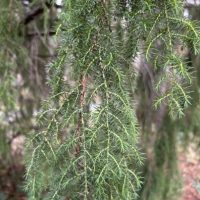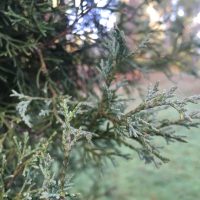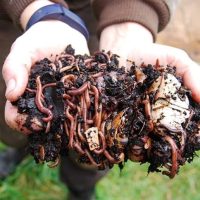February Plant Profile: Sycopsis sinensis

If you visit the grove of Sycopsis at the Pacific Connections Garden along Arboretum Drive this February you will be in for a treat – the flowers, while not showstoppers individually, are blooming in incredible quantity this winter.
Read moreJanuary Plant Profile: Juniperus morrisonicola

Scientific Name: Juniperus morrisonicola
Common Name: Yushan Juniper Family: Cupressaceae Native Range: Taiwanese mountains Location in the Arboretum: There are 8 of these trees in our collection; all accessioned in 1938. Seven are located within the Pinetum area and one is located at the north end of Crabapple meadow.
The Yushan Juniper is an elegant conifer native to a small area of the Taiwanese mountain ranges, which are the tallest mountains in Southeast Asia.
Read moreDecember Plant Profile: Cupressus gigantea

Read all about this gentle giant of a tree, Cupressus gigantea, and the work we do at the Arboretum to preserve this endangered species’ genetic diversity.
Read moreOn the Hunt for Spalding’s Catchfly
Out among the undulating biscuit and swale topography of the sagebrush-steppe in east-central Washington lives Spalding’s catchfly (Silene spaldingii). The basalt studded landscape feels vast and open under the blue skies of summer. For three weeks in August of 2023, you could find Allie Howell and I hiking between hundreds of patches of Spalding’s catchfly scattered over 50 square miles. Our task was to gather an updated population count after the devastating Whitney fire in 2020 that swept through a large section of the plant’s range in east-central Washington.
Read morePartner Spotlight: Sienna Wessel
Sienna Wessel is the first-ever second botanist at the Washington Natural Heritage Program (WNHP), bringing with her experience working for multiple land management agencies across the Great Plains and Rocky Mountains. Hailing from the Midwest, Sienna’s botanical journey began in the tallgrass prairie, where she developed a deep desire to protect plant biodiversity within the tiny remaining refugia of this once vast ecosystem.
Read moreMonitoring Weekend
The weekend of July 12th – 14th found 15 Rare Care volunteers and assorted partners on Table Mountain in the Cle Elum Ranger District for the annual Monitoring Weekend. We conducted 21 surveys and successfully located the target plant on 16 of them, with all of the teams participating in at least one success and one new discovery. Thank you to all of our fabulous volunteers!
Read moreAugust Plant Profile: Camellia sasanqua
Scientific Name: Camellia sasanqua
Common Name: sasanqua camellia; the Japanese name for all camellias is tsubaki,“tree with shining leaves,” while the Japanese name for Camellia sasanqua is sazanka, “plum-flowered tea.”
Family: Theaceae
Conservation Status: Least Concern
Native Range: Lowland forests of southern Japan
Culture/Habit: Organically rich, evenly moist, well-drained soils in shade to sun. Small trees to 16 feet tall or vining shrubs growing wider than tall, often depending on sun exposure.
UW Farm Weekly Dirt: Under the Surface: Adventures of a UW Farm Resident

A Day in the Life of a Red Wiggler
Hey there! I’m just your average worm living in the UW Farm’s bustling vermicompost bin. Let’s wriggle through a day in my underground life.
Rise and shine, it’s morning routine time. I move through our cozy bedding in search of breakfast. I can always find my buddies lined up at the buffet.
April Plant Profile: Montezuma Pine
Here at the Washington Park Arboretum we are lucky to care for many extraordinary trees. One of these amazing trees is our single specimen of Montezuma pine, Pinus montezumae var. lindleyi (Accession number 506-65-A) planted at the northeast corner of Crabapple Meadow in 1969. I first became acquainted with this tree in the spring of 2017 when I was the Teaching Assistant for a Landscape Plant Recognition class at the University of Washington.
Read more